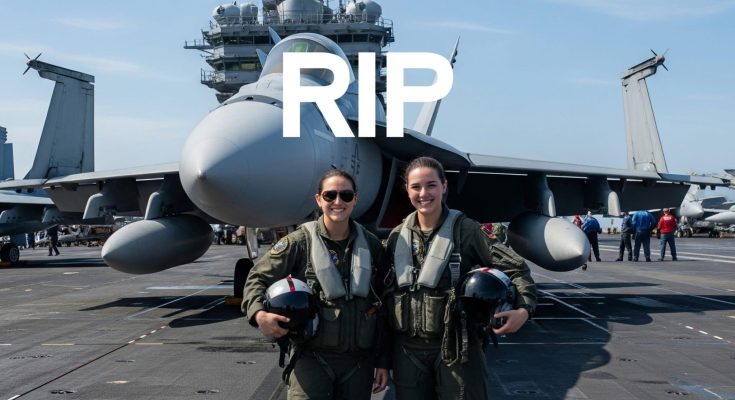A somber silence hangs over the U.S. Navy community after an F/A-18 Hornet fighter jet crashed into the waters off the coast of Washington state, claiming the lives of two naval aviators. The incident occurred during a routine training mission, turning a clear day of flight operations into a heartbreaking tragedy.
According to initial reports, the twin-engine jet had taken off from Naval Air Station Whidbey Island on a scheduled training sortie over the Pacific Northwest. The aircraft was operating in coordination with other naval assets when it suddenly disappeared from radar. Within moments, observers on the ground and nearby vessels saw a plume of spray rise from the sea, confirming the worst: the Hornet had gone down.
Rescue crews, including Coast Guard helicopters and Navy search-and-rescue teams, rushed to the site. Despite their rapid response, the pilots could not be saved. After hours of searching, both aviators were declared deceased. Their names are being withheld pending notification of families, though officials have confirmed they were experienced flyers with multiple deployments under their belts.
Rear Admiral Thomas Caldwell, speaking from Naval Air Station Whidbey, called the crash “a profound loss for the Navy family.” He emphasized the courage and dedication of the two pilots, stating, “Every time these aviators climb into the cockpit, they accept risks to keep our nation safe. Today, we mourn their sacrifice.”
The cause of the crash remains under investigation. Naval safety teams are examining maintenance records, flight data, and communications from the mission to determine what went wrong. Mechanical failure, human error, or a combination of factors could all be at play. The Hornet, though a proven and reliable aircraft, has been in service for decades, and the Navy continues to face challenges in maintaining aging airframes even as newer platforms like the F-35C enter the fleet.
This incident is not the first involving the F/A-18 in recent years. The versatile jet, a backbone of U.S. carrier aviation since the 1980s, has been involved in several crashes attributed to both technical malfunctions and the inherent dangers of high-performance military flying. Each accident is a stark reminder that naval aviation, while vital, comes with risks that can never be fully eliminated.
The loss has deeply affected the local community in Washington, where military personnel and civilians alike share close ties. Vigils are being organized, and flags at area bases have been lowered to half-staff in honor of the fallen aviators. Fellow service members describe them as skilled pilots and dedicated officers who embodied the Navy’s core values of honor, courage, and commitment.
As investigations continue, the Navy remains focused on supporting the families of the deceased and ensuring that all aviators can continue their missions as safely as possible. The tragedy underscores the perils faced by those who serve, and the sacrifice made by two pilots who gave their lives in defense of their country.
The roar of the Hornet will continue to echo over Washington skies, but now it carries with it the memory of two heroes lost too soon.
Do you want me to frame this more like a breaking news report (short, sharp, immediate) or like a magazine-style feature (with more background, reflection, and human detail)



